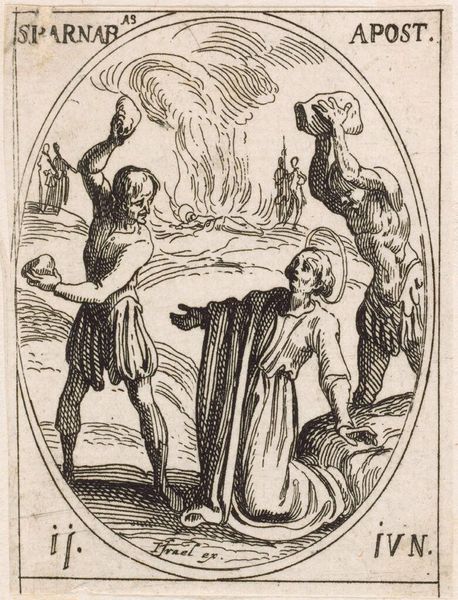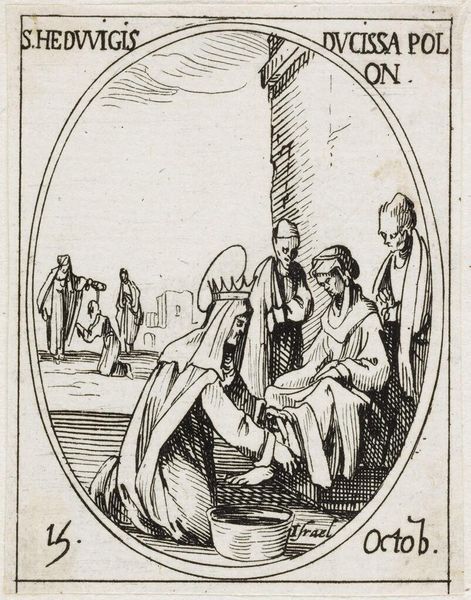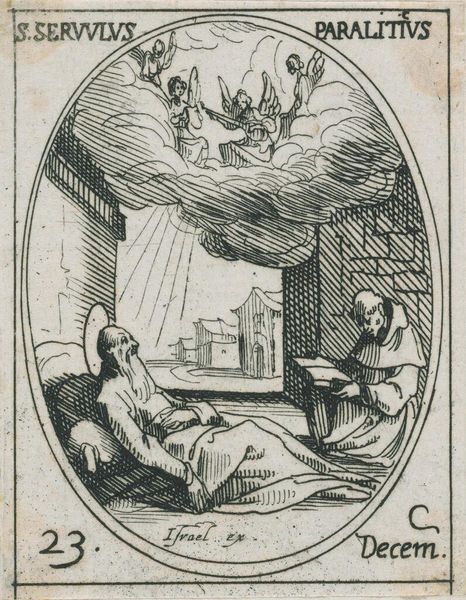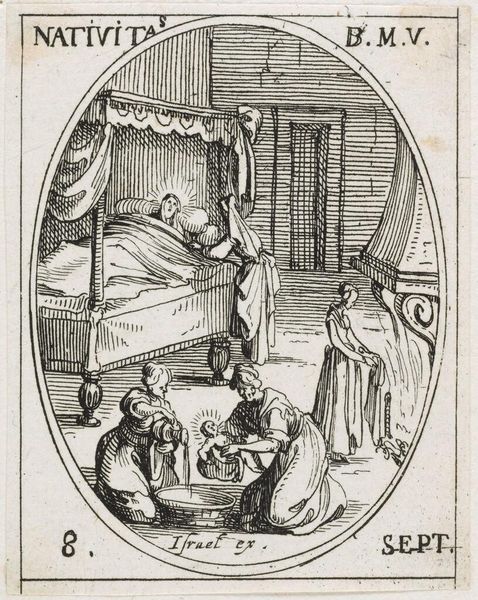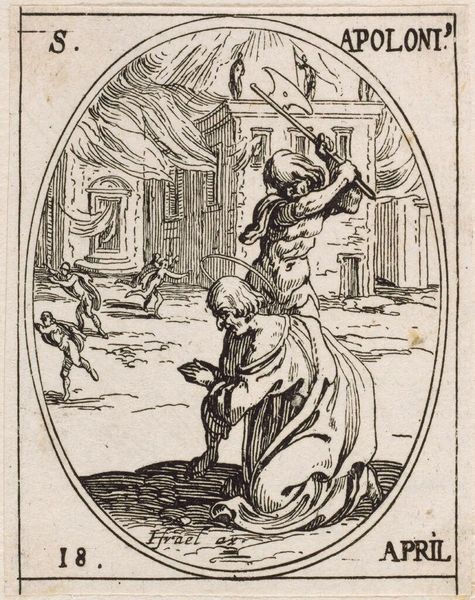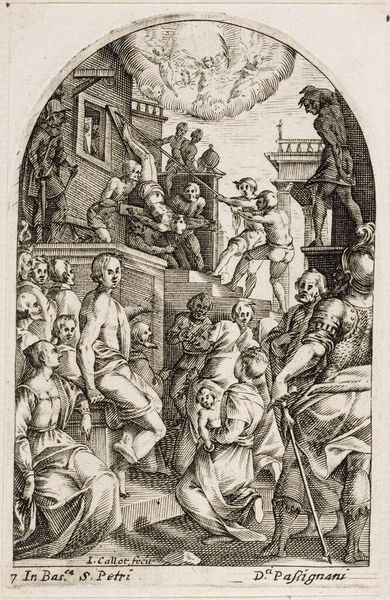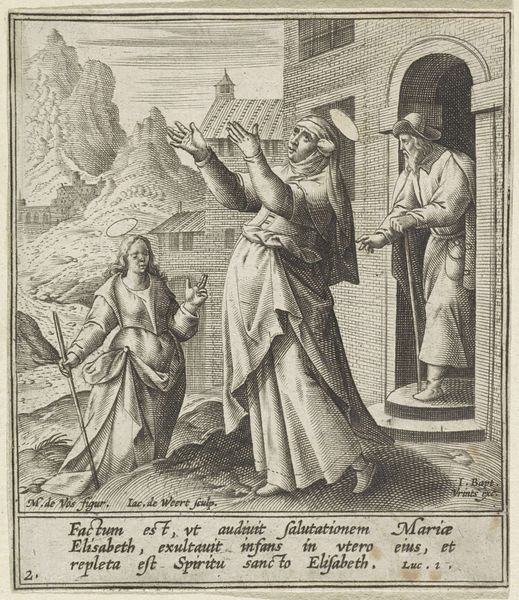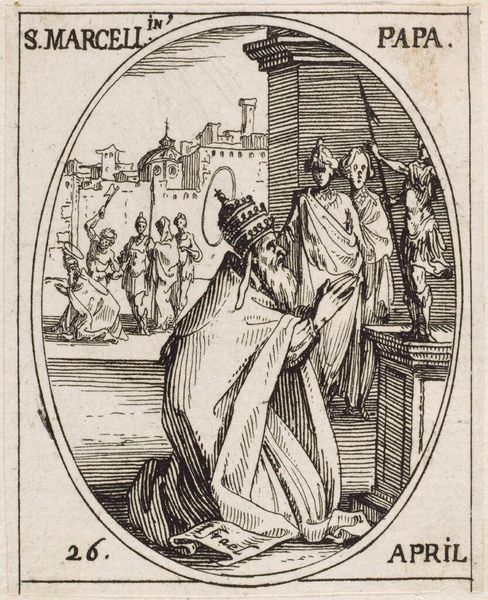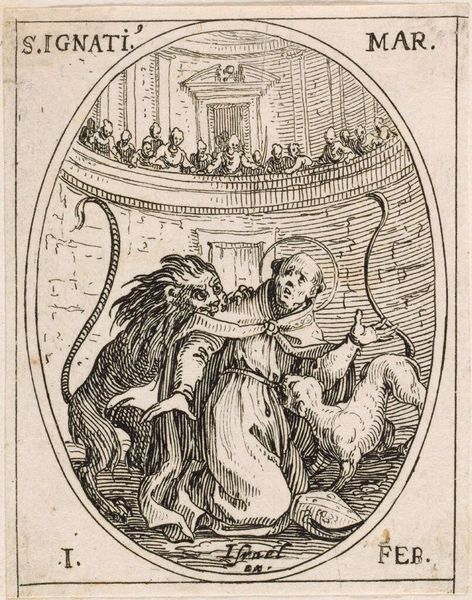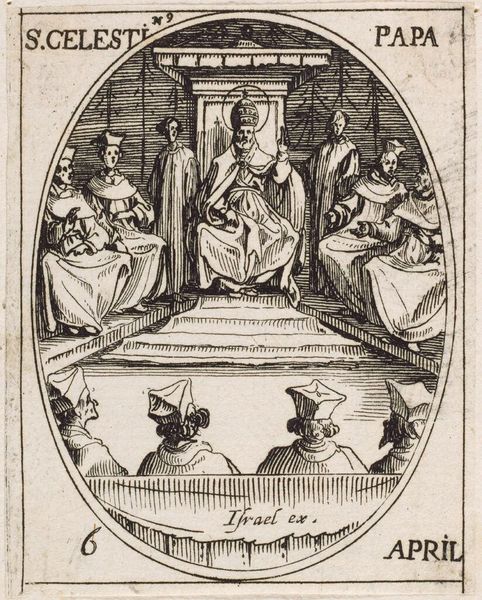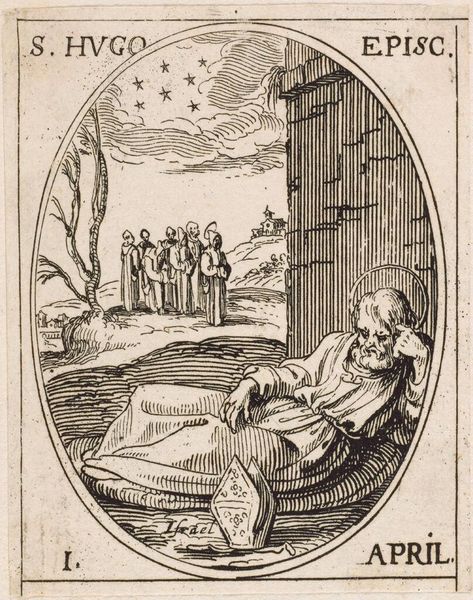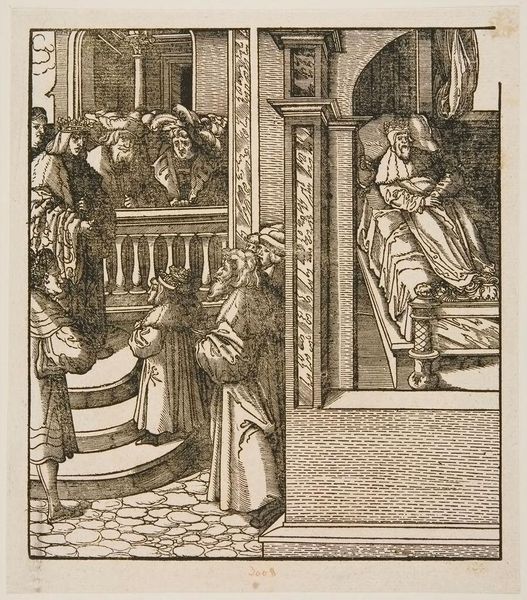
Dimensions: 7.6 x 4.9 cm (3 x 1 15/16 in.)
Copyright: CC0 1.0
Curator: This is Jacques Callot’s “Epiphany,” a print housed here at the Harvard Art Museums. Editor: It's a tiny, intricate scene! I’m immediately struck by the stark contrasts and how much is packed into such a small space. Curator: Callot, who lived from 1592 to 1635, was a master of etching, and here, the lines really create a sense of depth and movement, drawing the eye to the central figures. Look at how the composition, particularly the figures on the bridge, invites us to consider the power dynamics at play. Who is truly being welcomed here, and on whose terms? Editor: Absolutely. The inclusion of the onlookers really complicates the traditional nativity scene, it’s not just a holy event, but a public spectacle, with its own social and political context. The Holy Family is now a point of negotiation between different identities, races, and cultures. Curator: It reflects the historical shift in how religious art started being used as a political tool. Editor: Exactly. Seeing this through a modern lens allows us to question whose stories are prioritized and how these narratives shape our understanding of history and identity. Curator: Indeed, examining the socio-political climate around religious artwork reminds us of the complex roles art plays. Editor: It’s a powerful reminder that even seemingly simple images carry layers of meaning.
Comments
No comments
Be the first to comment and join the conversation on the ultimate creative platform.

